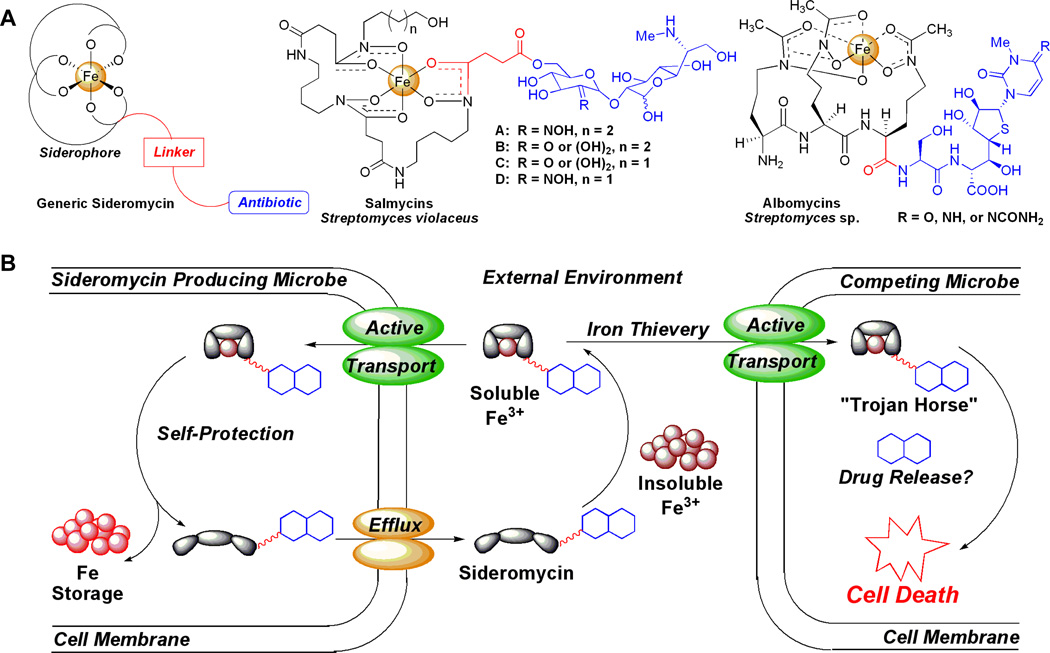Figure 2.
(A) Structures of generic and natural sideromycins (albomycins and salmycins). (B) Generic schematic of sideromycins as ‘Trojan Horse’ antibiotic delivery agents. Sideromycins (siderophore-antibiotic conjugates) act as normal siderophores for sideromycin producing microbes, which can self-protect from the antibiotic, by scavenging extracellular Fe(III) via the pathways described in figure 1. For competing microbes attempting to steal the sideromycinbound Fe(III) nutrient, active transport of the sideromycin via siderophore uptake pathways exposes the competing microbe to the antibiotic, for which it lacks the inherent resistance found in the producer, and ultimately causes cell death.

